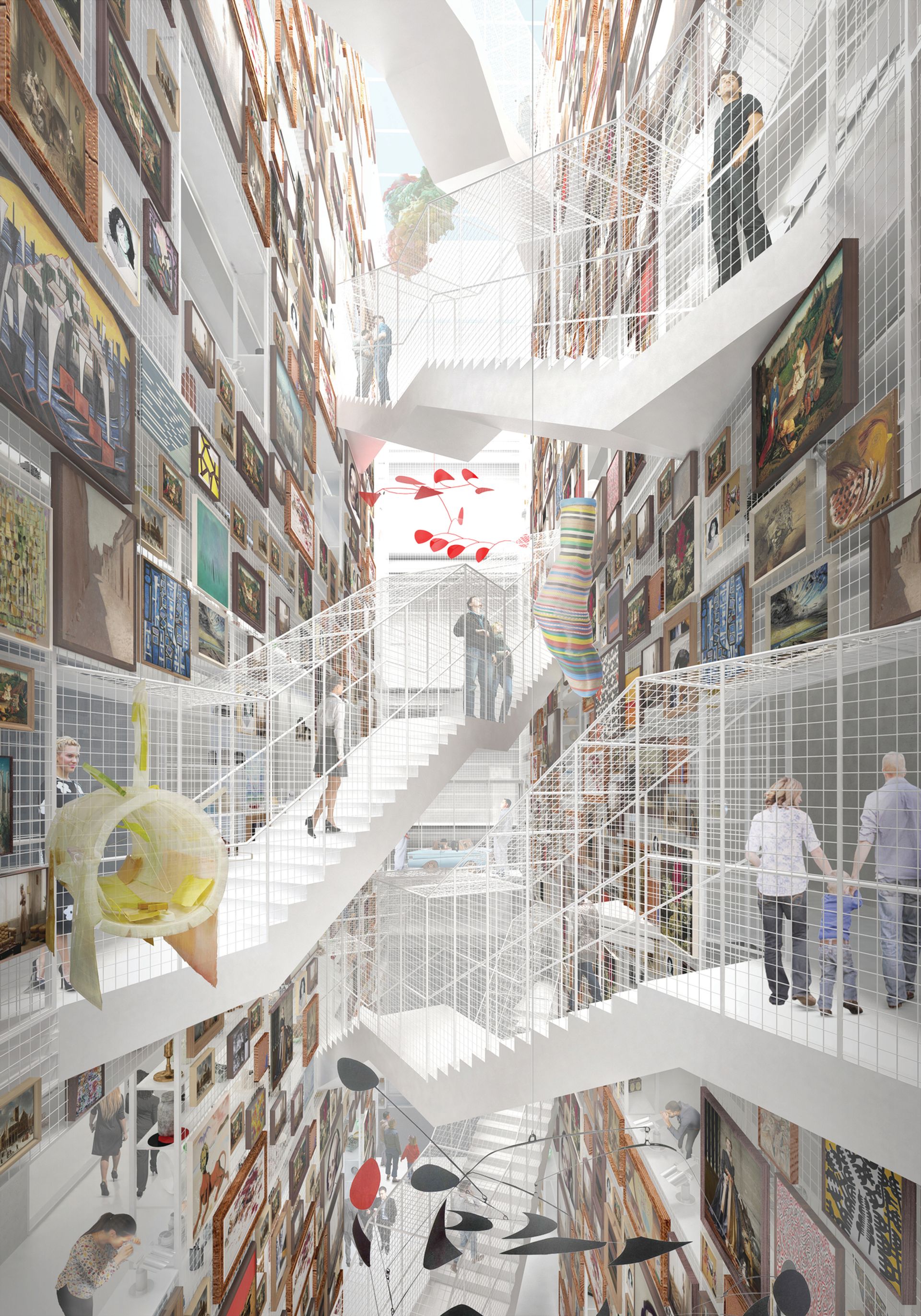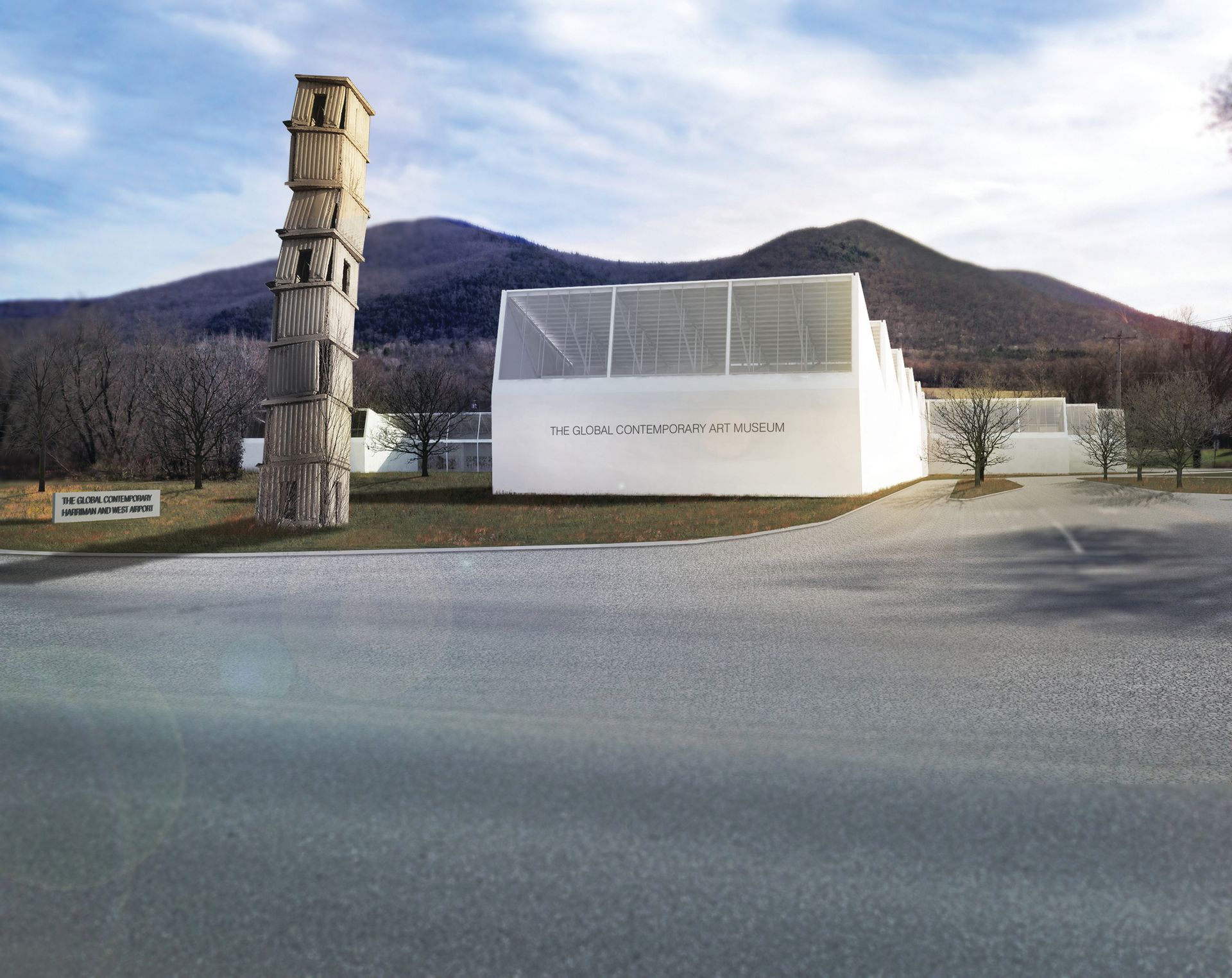A museum in Rotterdam is setting an unusual precedent with a money-making scheme to store and display art owned by private collectors. The endeavour is part of the Museum Boijmans van Beuningen’s Public Art Depot, an open art storage facility designed by the architecture firm MVRDV due to open in late 2018. Rotterdam’s city council approved the plan late last year.
Private collectors will be able to rent storage space for €350 to €400 per square metre. For an additional fee, the museum will facilitate loans, produce condition reports and provide other collection management services. Visitors will be able to tour the museum’s collection, as well as the private ones, but only with collectors’ approval.
More than 10% of the new store, or 1,600 sq. m, will be rented out. The museum’s director, Sjarel Ex, says he has already spoken to more than 60 European collectors about the project and six have signed up. Discussions are also under way with customs officials about launching a freeport inside the depot.
Some see the plan as part of a larger trend toward collapsing boundaries between the non-profit and private sectors. Adrian Ellis, the director of AEA Consulting, says: “This seems like part of the art world blur that we see in so many other contexts, in which curatorial agendas are stalking horses for, or simply subsumed by, the commercial considerations of private collectors and dealers.” Although Ellis does not see a problem with renting storage space or charging for conservation and related advice, “giving tours of private collections stored there is more problematic”.
Stichting De Verre Bergen, a Rotterdam-based social investment fund, is contributing €20m to the €52.3m project. The rest of the funding for the depot will come from admission fees, rent from collectors, and the local authority, which will also provide €2.5m for annual operating costs.

Ex says measures will be taken to avoid potential conflicts of interest. Participating collectors must be approved by museum staff and commit to storing their collection on site for five years.
The Brussels-based collector Alain Servais says: “For the museum, this concept kills many birds with one stone. It provides private funding for a public initiative, it allows it to share the costs of its collection management services, and it brings private collectors closer to the museum, which should encourage donations. Storage is becoming a serious problem for collectors, with no easy or reasonably priced solutions.”
For Ex, the partnership with collectors is secondary to the main objective of allowing the public to survey how heritage is stored and conserved. He says visitors to the 14,000-sq.-m depot can “look over the shoulders of specialists and what they see is not ‘finished’, but always being worked on. These spaces are workshops, research facilities and treasure chambers.” There will be a café and sculpture park on a rooftop terrace.
Museum officials came up with the idea for the depot after their regular storage facilities in Rotterdam were threatened by flooding. The museum’s 145,000-strong collection spans the early Middle Ages to the present day and includes work by Rembrandt and Van Gogh.
Ex hopes the scheme will spark debate about how and why museums continue to amass works, most of which remain out of public view. Only a fraction of objects in public collections regularly see the light of day. Just 8% of the Boijmans’ holdings, for example, are currently on show. The same is true for the Louvre in Paris, which at any one time is showing 38,000 works out of a total collection of 460,000.
The Schaulager in Basel, conceived by the architectural firm Herzog & de Meuron as “a warehouse for the open storage of contemporary art”, could be regarded as a forerunner to the Public Art Depot concept. But Ex dismisses this notion, saying that the Schaulager, which opened in 2003, is accessible only by appointment and has a much smaller collection. “For the first time, anywhere in the world, a museum’s entire collection will be accessible to the public,” he says of the Rotterdam depot.
Three more initiatives that mix public and private The for-profit museum
A mega-museum in the grounds of a US airport proposed by Thomas Krens, the former director of the Solomon R Guggenheim Museum, reportedly includes space for collectors to store works. The Global Contemporary Art Museum at the Harriman-West Airport Grounds in Massachusetts, scheduled to open in 2018, will be privately owned by a group of investors, according to the Berkshire Eagle.

The loan matchmaker
Vastari, a London-based business, enables collectors to lend their works to museum shows worldwide via an online platform. The company collaborates with more than 1,800 curators who are on the lookout for works. Francesca Polo, Vastari’s director, says that lending through the platform allows collectors “to validate the cultural significance of their pieces as well as save on costs”.
The corporate collection booster
The International Association of Corporate Collections of Contemporary Art (Iaccca), a Geneva-based non-profit founded in 2007, links corporate collections with public institutions. DZ Bank art collection in Germany and the Fundación Mapfre in Madrid are among Iaccca’s 38 members. Curators at the Centre for Fine Arts in Brussels hope to secure around 30 loans from Iaccca for its show, The Power of the Avant-Garde, in September.

